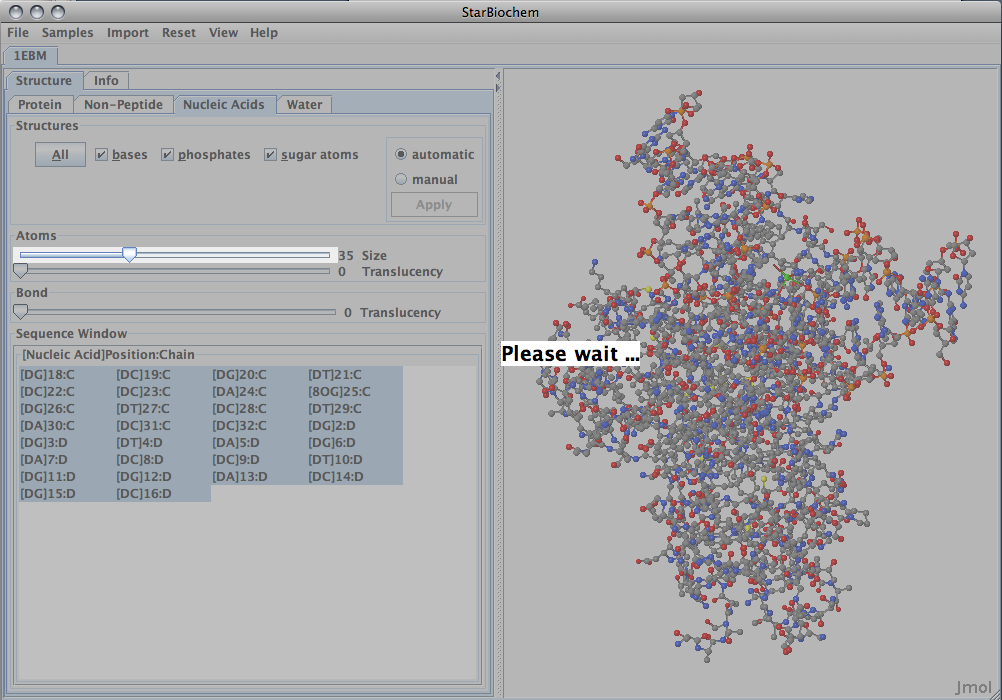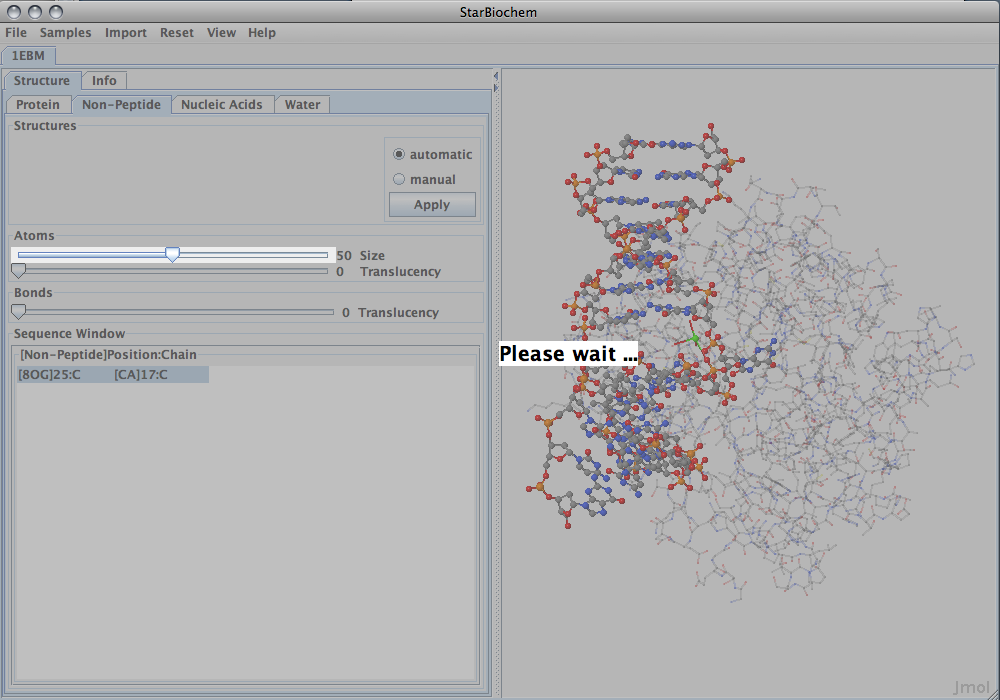Isaiah M. Castaneda Week 6
From OpenWetWare
Jump to navigationJump to search
Star Biochem DNA Glycosylase Exercise
- The DNA is located at the top of this picture and the protein in located below it. The protein atoms are enlarged.

- (a)[Met]158:AS#1761
- Amino Acids 105-117 were the following:
- 105 – Threonine
- 106 - Leucine
- 107 – Alanine
- 108 – Glutamine
- 109 - Leucine
- 110 - Tyrosine
- 111 - Histidine
- 112 - Histidine
- 113 - Tryptophan
- 114 - Glycine
- 115 - Serine
- 116 - Valine
- 117 - Aspartic Acid
- (a) There are helices & they are pink. There are sheets and they are yellow. There are coils and they are blue.
- The negatively charged amino acids are on the outside of the protein. Since the side chain is hydrophilic, the cellular environment must be hydrophobic so that they may interact with one another.

- Trying question #6 not only froze the StarBiochem program, but also slowed down all other programs. I shall try it without the increase in atoms size.
- (a) If my eyes work well, I believe there are 14 base pair.
- (b) From what I can see, there appears to be 2 unpaired DNA bases.
- (c) Increasing atom size in the non-peptide tab freezes the program as well. After finding the Guanine, I note that it is out of the helix, facing toward the protein. Perhaps the hOGG1 protein beaks the bond between a base pair to check a specific base.



- You are more likely to find the amino acids that recognize a damaged guanine in Helix 16 because that helix is located right next to the guanine, whereas helix 1 is located far from the guanine, at the opposite side on the edge.
Cn3D
- This is a Quaternary structure because there are multiple chains interacting with each other that make up the overall hOGG1 protein. This screenshot lists 3 chains in particular.
- By using the coloring domain shortcut, I can see 3 distinct domains in the protein, colored blue, brown, and purple in the image below.
- Some of the same things from the structure can be viewed in Cn3D that were seen in Star Biochem. For example, tertiary structures are immediately made clear upon opening the file with Cn3D. These structures could be seen using Star Biochem as well. Similarly, both programs color code them. The ball & stick model (as well as space-filled and many others) was also available in both programs. However, unlike in Star Biochem, you cannot view more information by holding the cursor over certain atoms. Another similarity was that you could isolate certain parts of the structure and view them more closely. Although details were more easily provided in Star Biochem.
- This screenshot is very similar to the 1st picture shown in my journal entry.
Here is another, with the ball & stick model

and one more using the space-filled model, since my Star Biochem shot is a sort of a hybrid of this and the one above

- To view the structure, either program works very well. I like that Cn3D starts out with the tertiary structures and shows the Calcium ion. However, I have bonded with Star Biochem and am currently much more familiar with how to manipulate structures with it. Both are simple to use and have a wide variety of functions, but the step by step directions I had throughout my Star Biochem made me biased to this program. Still, I thoroughly enjoyed my ventures with both.











